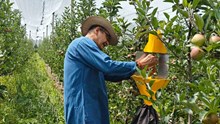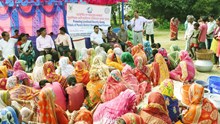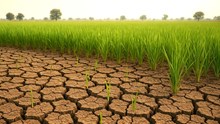
The use of plants for medicinal purpose is a very common practice, especially among the rural people all over India. A considerable section of the urban population also now attaches much importance to many plant species for their preventive and curative properties against various types of ailments. The increasing requirement of medicinal plants has however, brought to light two major undesirable features, particularly when these materials have been on direct use.
These are, firstly, their well-timed availability and, secondly, procurement of genuine materials that are free from harmful contaminants. In fact, when we urgently need a particular medicinal plant, very often we are faced with the difficulty of getting it just in time of its requirement. It is not also uncommon that even it has been procured, its collection has been done from a filthy place and thus, being badly contaminated with harmful materials, the material itself may be rather than a a source of infection healing agent.
Keeping in view the above drawbacks, it is a justifiable approach that these plants of great worth should be grown in such a location that their well-timed availability is ensured on the one hand and on the other, their growing should be taken up under such a well-guarded condition that only the genuine and unblemished materials could be obtained from there. This concept has brought to light the necessity establishment of organized plantations exclusively for growing medicinal plants, which to the common people are popularly termed as herbal gardens.
Herbal garden is, in fact, a fairly recent farming practice of the scientific management of plants having cultivation and medicinal value. It should be remembered that the worth of a herbal garden depends on a great many considerations. In the present article, basic aspects in setting up such a garden, procedure in its establishment and management in its running condition have been considered for discussion.
Basic Consideration
A number of pertinent factors have to be considered before such a garden is established. A few have been brought to light in the following.
(i) Particular attention should be given in selecting the site of the garden with due consideration to the fact that the medicinal plants to be grown there should be within the easy reach of those who genuinely need those.
In the rural areas, Govt. Agricultural Farms, Panchayats, Anchals, Gram Sabhas and Community Development Blocks are suitable organizations to take up the task for the establishment of such gardens, at least one in each village. In the urban areas, municipalities, welfare societies, non-govt., organizations, schools, colleges, and public offices are suitable locations and even benevolent persons who have sufficient area of land and desire to serve the people should also come forward in setting up herbal gardens.
(ii) The larger the size of the garden, better it is, because a large number of plant species of medicinal importance could be possible to be grown there. However, relatively large area of land is difficult to be obtained in many places. In fact, instead of one large garden, establishment of several well-scattered and small-sized gardens would serve the purpose in a better way. What should be the minimum area of a garden could not be specified but at least an area of 80 100 square metres seems to be necessary.
(iii) An unsanitary situation, where market wastes are dumped, sewage materials flow in canals, stench emits from tank, grazing of pigs is a common feature is never considered a desirable site for possible co contamination.
(iv) Existence of tall in close proximity that may trees or buildings provide shade in the garden is undesirable. For efficient growth of most plants in the garden, an open sunny and ventilated situation is always preferred.
(v) A site regularly polluted with dust from village roads, fly-ash from thermal power-stations, industrial smoke from should set up chimneys of brick-fields and billowing industries not be considered as suitable sites to a herbal garden.
(vi) An area inhabited by unruly mob or if it is regularly threatened by trespassers should not be considered to be an ideal site.
(vii) Availability, of skilled labourers and assured irrigation facilities are beyond doubt, merits in selecting site of a herbal garden.
(viii) Physiography of the area should be of concern, if undulations in the land are too much and steep. In regard to soil condition, it should be sufficiently organic matter and should have drainage. Texturally, loamy soil is most suitable. or rich in good sandy-loam soil is most suitable.
(ix) An important point to be remembered in a herbal garden is, the plants are to be grown a there only organically. That is to say, no chemical fertilizer, chemical pesticide, plant growth regulator or any other agro-chemical should be applied in the garden. As agro-input, only organic materials should be applied and soil-working should be done by the use of suitable implements.
Steps of Lay Out
(i) On selecting the site, the first step should be demarcation of its be done by wire-fencing and area. This may preferably be with barbed-wire fence. An interwoven wire-fence is a still better method, and by far, barbed type of interwoven wire-fence is most efficient to prevent entry of trespassers.
A combination of barbed-wire or a along with strong may be considered barbed, interwoven-wire fence and protective live-hedge highly efficient. To erect this, a running wire-fence should at first be installed. Then, protective hedge rows should be raised on both are in close touch sides of it such that the rows with one another.
Hedge plants which are sturdy and have thorns spines in them are highly protective against trespassing. Some of these can be named as Acacia arabica, Carissa carandas, Bougainvillea Species, Duranta plumieri, Inga dulcis, Lantana camaro, Parkinsonia aculeata, Prosopis juliflora, Rosa multiflora, Lawsonia inermis etc. A hedge plant having medicinal value if any, should no doubt, be given preference.
(ii) After erecting a fence with or without hedge rows, the land should be prepared. If the soil is undulated, the raised or depressed parts should be flattened by judicious soil shifting process.
Before planting, deep ploughing or delving with a forked-spade is highly desirable. The soil may contain insect eggs, larvae, protozoa etc., and these should be removed by hand-picking. In order to destroy harmful soil organisms, chemical sterilization of the soil by the use of chemicals like chloropicrin, methyl bromide, mylone, vapum etc. are although highly effective, their use in a herbal garden is not desirable. Heating the soil with hot iron rod has also its drawback in that, it destroys many micro-organisms which are highly beneficial for the plants to grow.
(iii) Provision of a well, manual tubewell1 shallow-depth tubewell inside the garden or a is definitely of advantage for irrigating the plants. Installation of solar-power or wind-power units if possible, may again be of great help for easy lifting of well-water and operating the shallow-well.
(iv) Green-manuring the soil of the herbal garden before planting is a highly efficient device to improve its textural condition as well as to enrich the fertility status of it. To adopt green-manuring, seeds of Sesbania aculeata @35 kg per hectare basis should be broadcast on tilling the land during pre-monsson rain. After 1-2 months of sowing when the seedlings will be 40-50 cm tall in rainy season, these should be ploughed down to the land and allowed to rot in rain water. By this organic matter @15-25 tonnes practice, and nitrogen @ 60-90 kg per hectare basis may be incorporated in the soil.
(v) The Layout of the garden should be done judiciously making provision of paths and cropping plots as desired. It is advisable to increase the number of cropping plots rather than making increase in the size of a plot.
(vi) As chemical fertilizers are always dispensed with in a herbal garden, the individual cropping plots should be made enriched by copious application of highly decomposed organic manure, vermicompost etc. Inoculating the cropping plots with the nitrogen-fixing bacterium, such as Azotobacter chroococcum is a good practice to add nitrogen content in the soil. Similarly, phosphate solubilizing bacterium, viz., Bacillus megaterium var. phosphaticum may be inoculated to make availability of phosphate.
(vii) To raise plants, sowing of seeds or planting of propagating materials should be done in rainy-season or spring in accordance with species, locality, weather conditions and irrigation facility that is available. Only genuine materials which are free from diseases, insect eggs or larvae and other contaminants should be used to raise the plants even if they cost high.
Medicinal Plants to be Grown in Herbal Garden
A vast multitudes of plant species and varieties under them are known to have medicinal value against a number of unhealthy conditions, mild or of severe nature. Apparently, more the number of such plants that are grown in a herbal garden, more purposeful it will be to the users. But there may be practical plants in a limitations to grow large number of single garden as the area of it does not become large besides that, management may also be difficult. It should be noted that if a large number of plants become necessary to be grown, it is rather advisable to set up more than one herbal garden in the locality instead of accommodating many plants in the same garden.
Selection of species and varieties of medicinal plants that are to be grown in a herbal garden should in fact, be done with great judgement, in consideration to a host of factors. The plants which have efficacy against ailments that are more prevalent and endemic locality should always be given preference. The diseases which are known to appear in epidemic form in some years should also be duly kept in view.
In the matter of selection of plant species, opinions should always be sought from the experienced persons in the locality and also the specialists of ayurvedic and unani medicines, if any is known in the locality. Tall trees like, margosa (= Neem), wood-apple (Bael), emblica (= Aonla) etc. have although plentiful medicinal properties, these are hardly recommended for growing in a small-sized herbal garden because their shade may hamper growth of other low-heighted plants that are grown in the garden.
In general, some common medicinal plant species that may be considered for growing in a herbal garden under tropical and sub-tropical situations in various parts of India have been listed in the following. It should however, be noted that the list is only a general one and should not be considered to be a rigid one under all conditions.
(1) Bhoomi aonla; (2) Black nightshade (Kak machhi); (3) Blond psyllium (Isabgol); (4) Camphire (Henna); (5) Indian borage (Pashan vedi); (6) Sida (Shwet berela); (7) Creat (Kalmegh (8) Indian hemp (Ulat kambal); (9) Fire plant (Lal chita); (10) Mint (Pudina); (11) Sacred basil (Tulsi); (12) Aloe (Ghrita kumari); (13) Penny wort (Manduki); (14) Senna (Bhumiari); (15) Pepper (Pipla mul); (16) Malabarnut (Vasaka); (17) Periwinkle (Nayantara); (18) Rauwolfia (Sarpa gandha); (19) Asparagus (Shata muli); (20) Sweet flag (Bach); (21) Gratiola (Brahmi); (22) Eclipta (Bhringa raj); (23) Withania (Ashwa gandha); (24) Night shade (Kanti kari) etc.
Management of Herbal Garden
Some conditions maintained in a to be are imperatively well-kept herbal garden, among which, the following are of significance.
(i) Utmost sanitary conditions must always be maintained.
(ii) Unauthorized persons should not enter into a herbal garden and only some particular person(s) should be entrusted for this purpose. Thus, if somebody needs a particular plant or plant part for medicinal purpose, he will request the person concerned who would bring him the same person entering into the garden.
(iii) The person who has been assigned to enter into the garden to bring the material should go inside, only after thorough washing of hands and feet, preferably with soap water or with sanitary lotion.
(iv) Little amount of lime may be sprinkled at the entrance of the garden such that the person should enter on walking over the layer of lime.
(v) It is a very important consideration that plants in a herbal garden should be grown by organic farming procedure only. This means that any chemical fertilizer, chemical pesticide or agro-chemical should never be applied in the garden to boost up productivity or improving effectiveness of the plants that are grown therein. For such purposes, bio-based manure and pesticides should only be used.
(vi) To control insect or animal pests or diseases, employment of mechanical devices like broom-trap, light-trap, hand-picking, collecting insects in inverted umbrella, stem banding, scare-crow etc. need encouragement.
(vii) Irrigation should preferably be given by drip method. However, sprinkler irrigation system, if possible, to be installed, is the best method as the plant parts are also washed out of dirt and dust due to sprinkling of water while irrigating a plot.
(viii) Horticultural training and pruning operations of the plants and weeding and hoeing etc. of the soil should be done according to necessity.
(ix) Only the required amount of plant materials should be taken by the user without unnecessary wastage of any material. Uprooting or explanting plant part should not be done by a person without washing hands. Instead of pulling apart a plant or breaking its part by hand, a secateur, a pair of scissors or a suitable knife should be used. The cut-out materials should be collected only in sanitary bags.
(x) No plant part should be used as medicine, unless it is thoroughly washed with clean and running water.
(xi) The user should have a thorough knowledge of which ailment the medicinal plant or its part has its efficacy. If necessary, he may seek advice from persons who have adequate knowledge on this. A board should also be provided at the entrance of the herbal garden stating the efficacy of the plants that are cropped in the garden against various ailments.













Share your comments